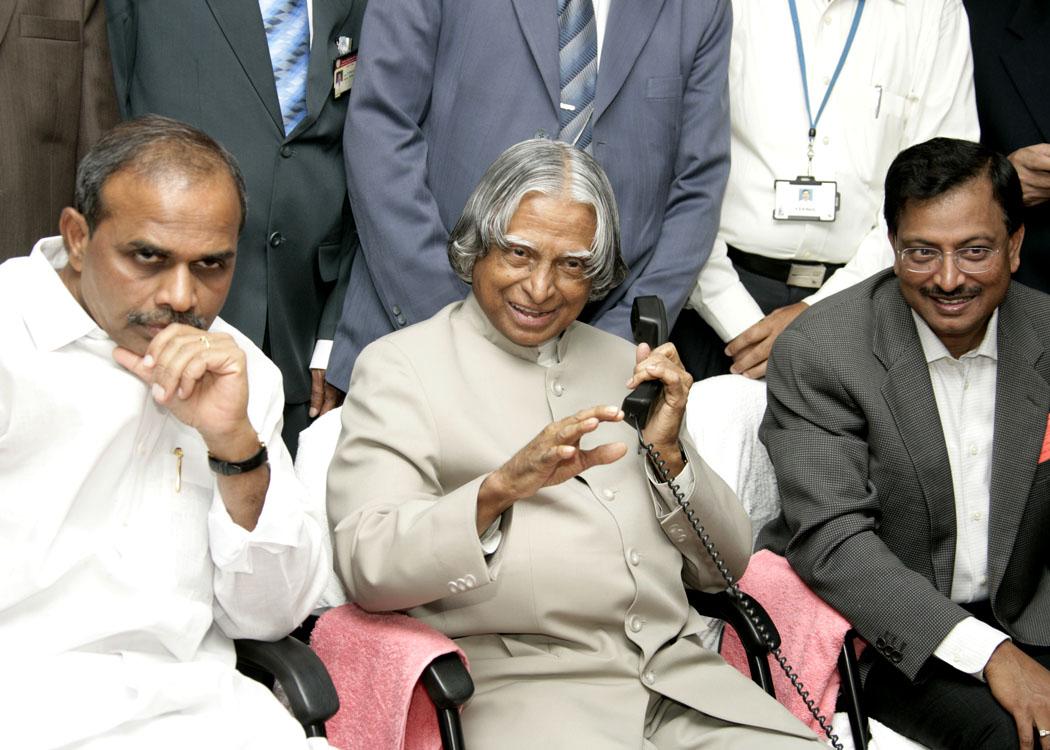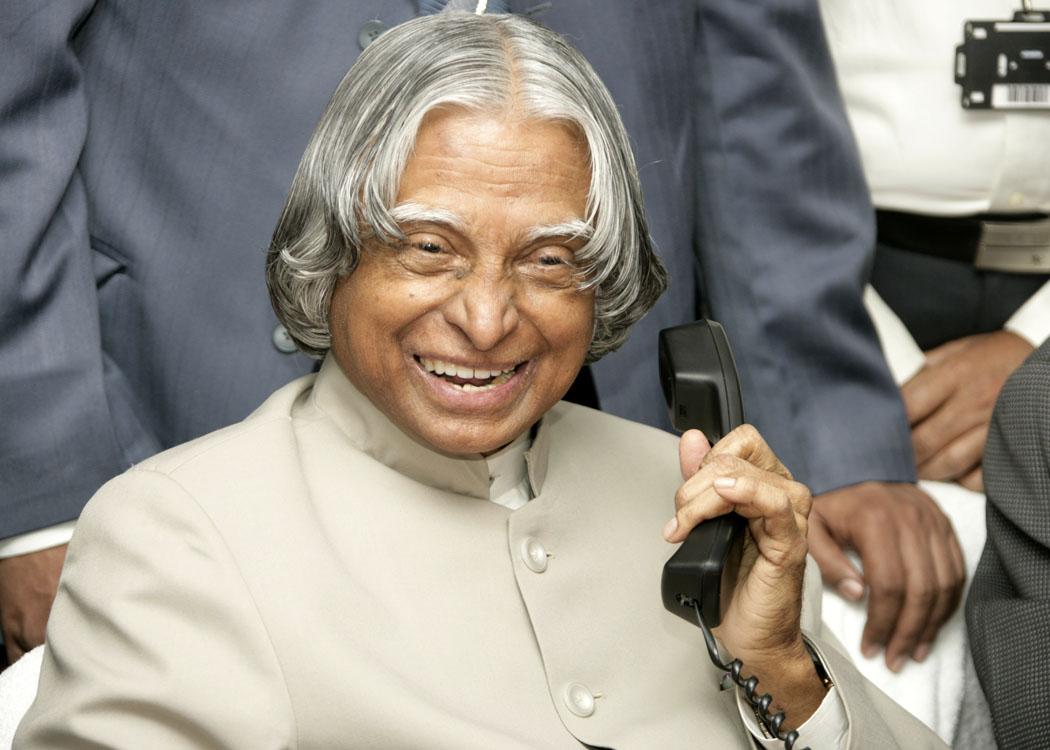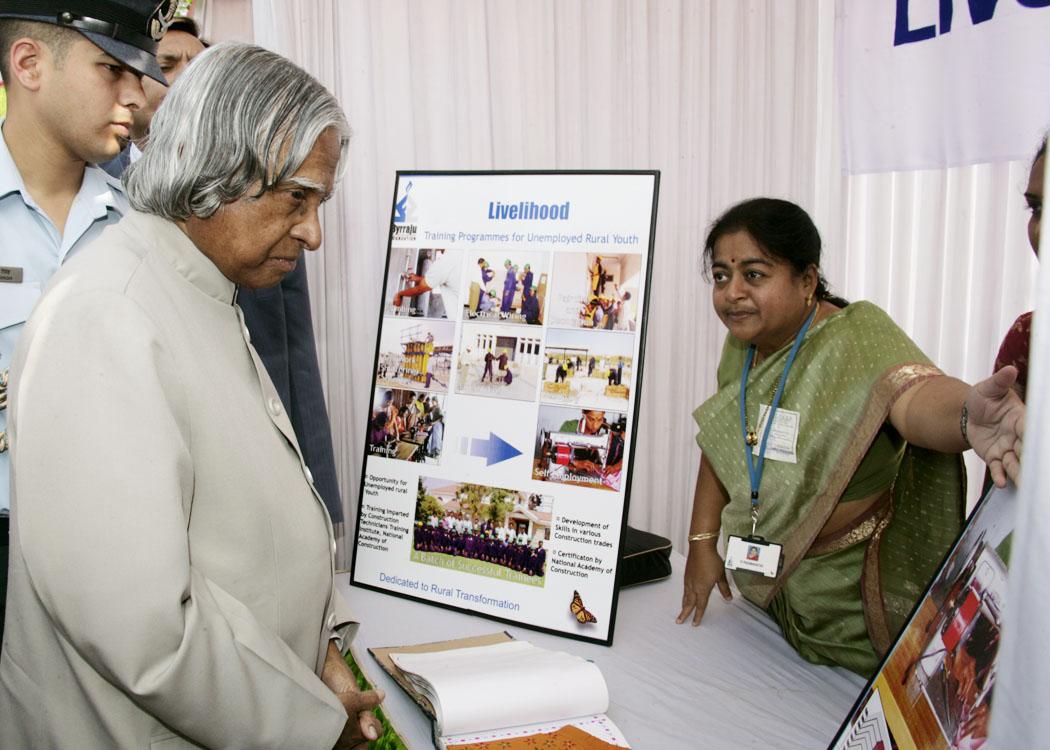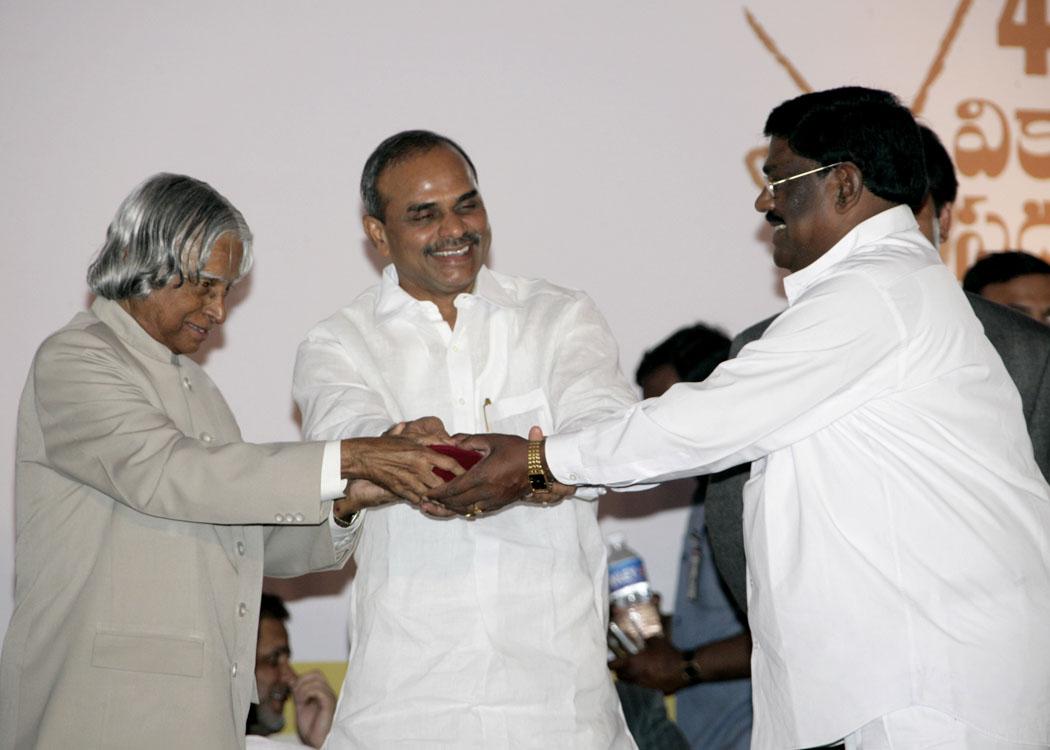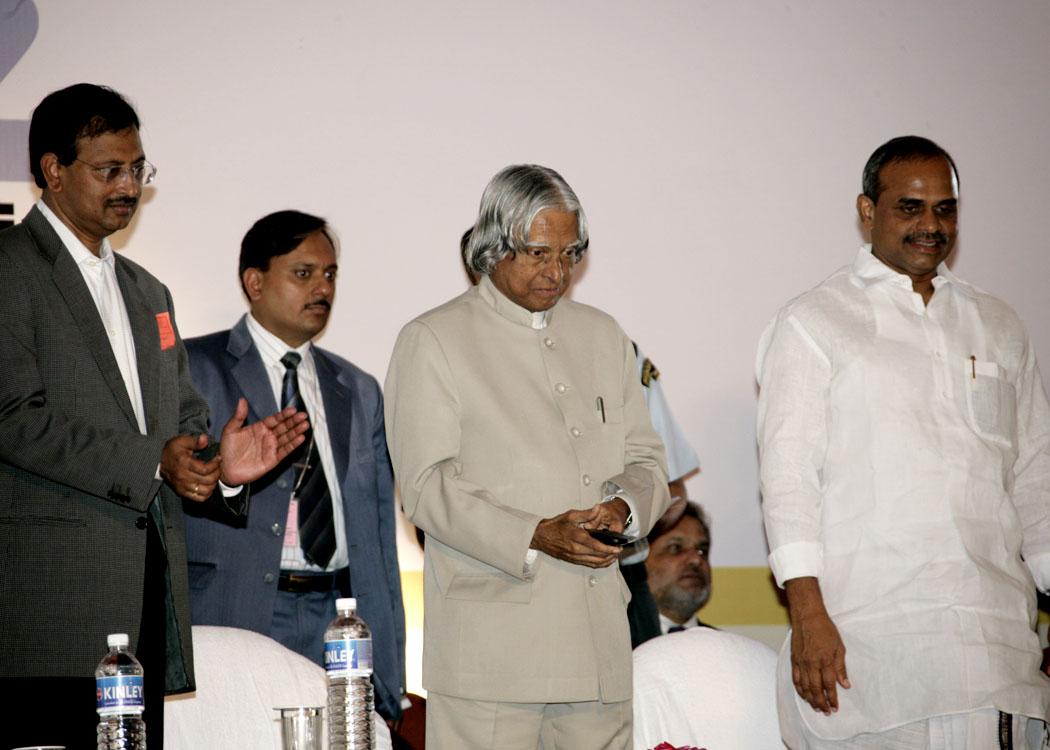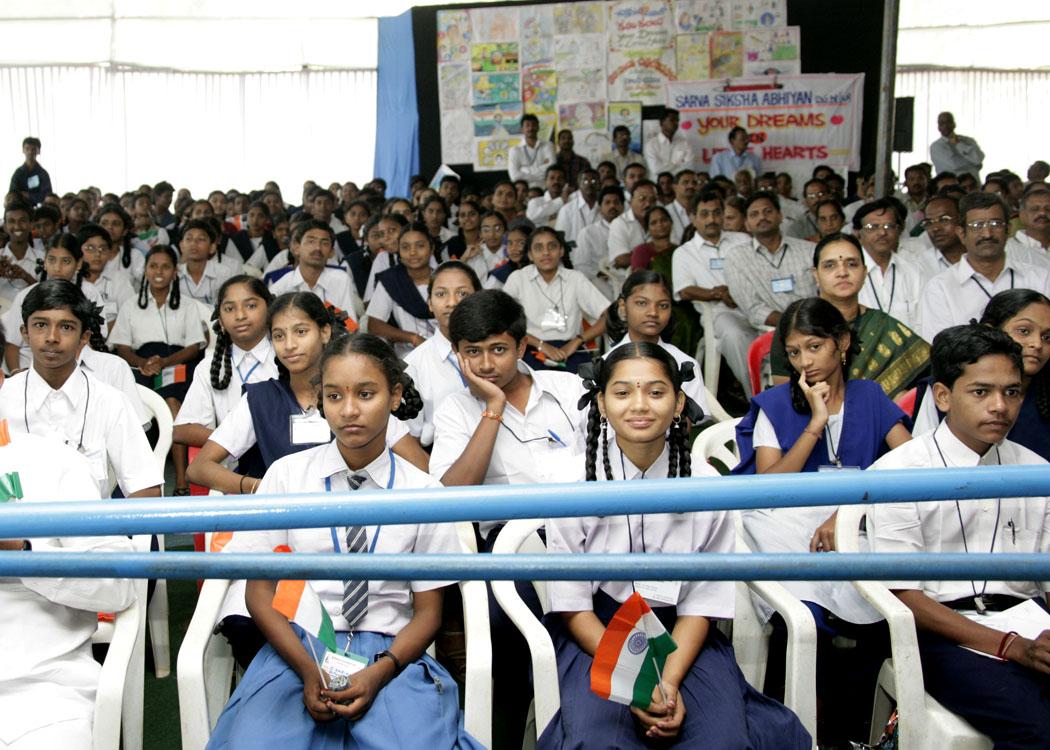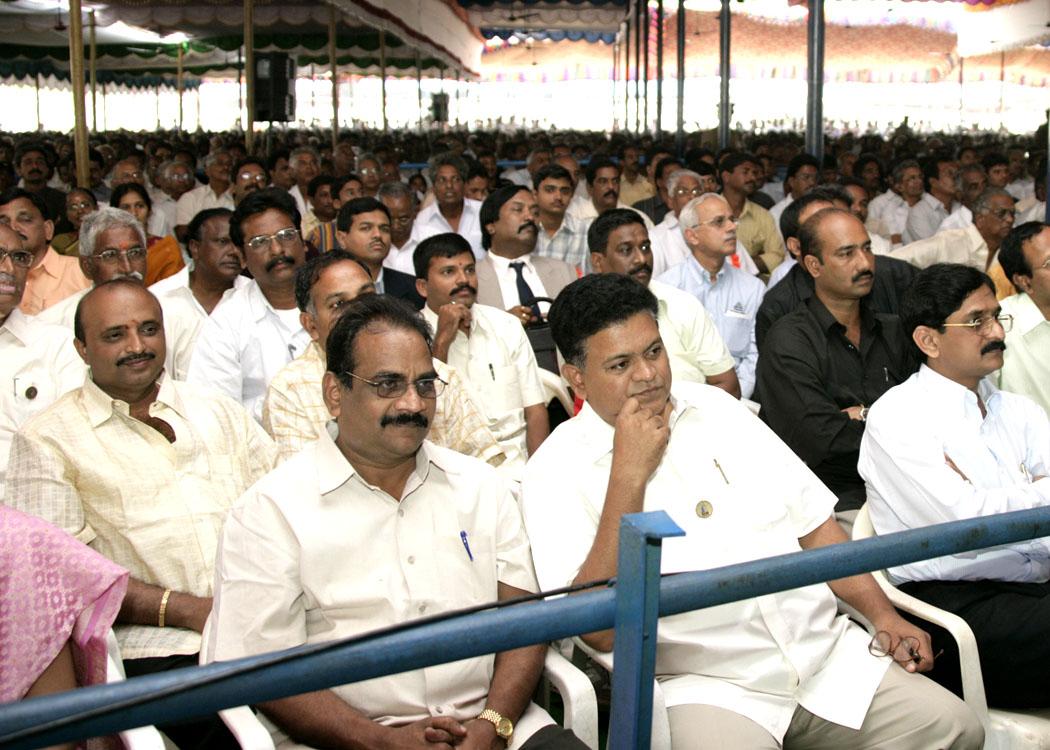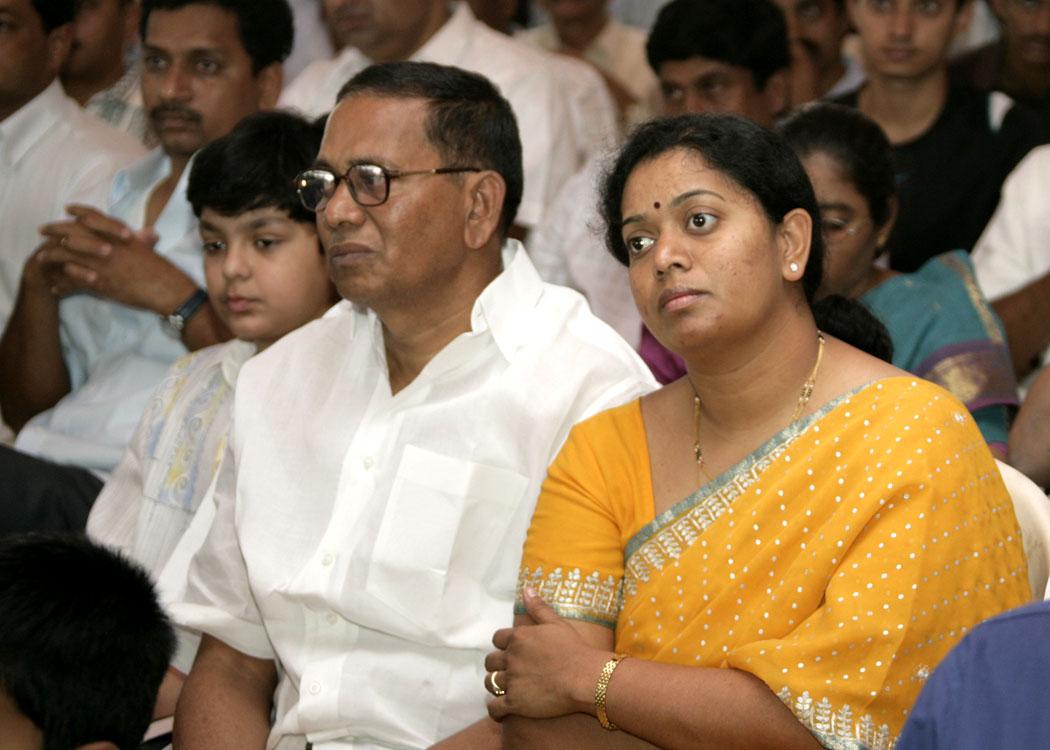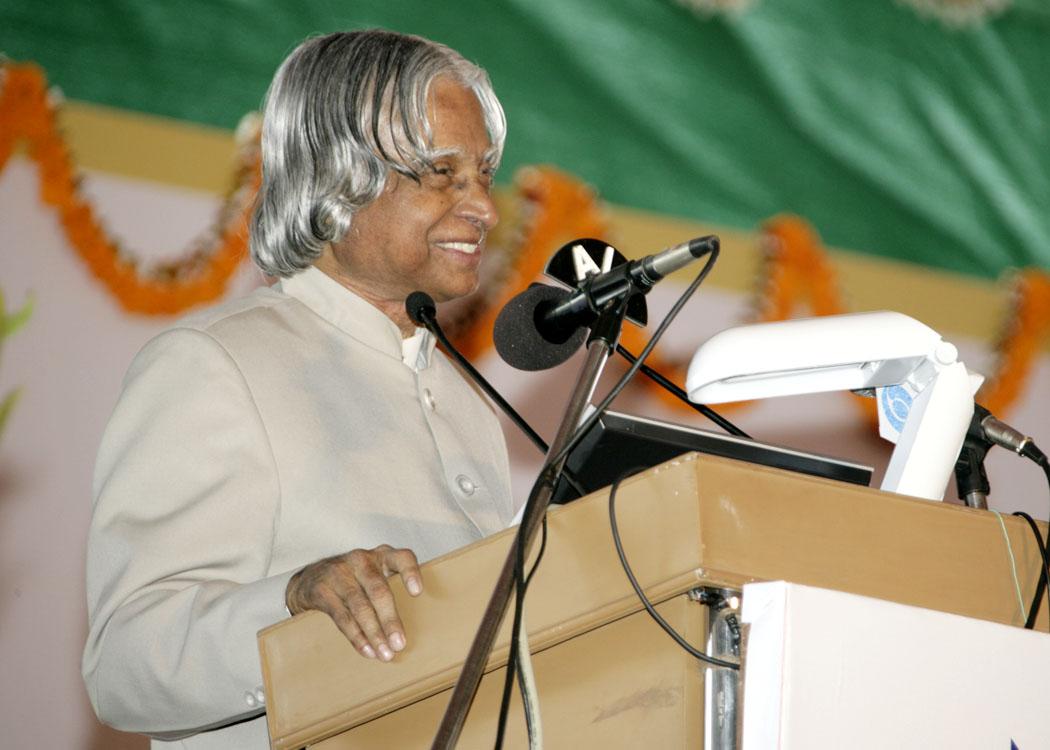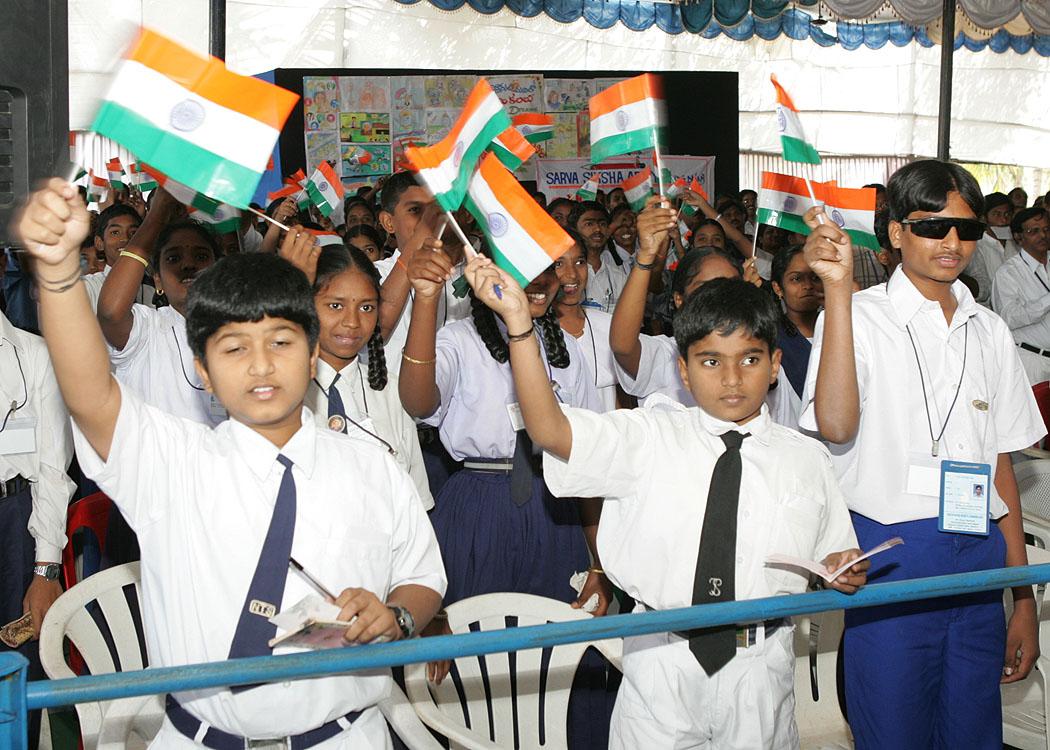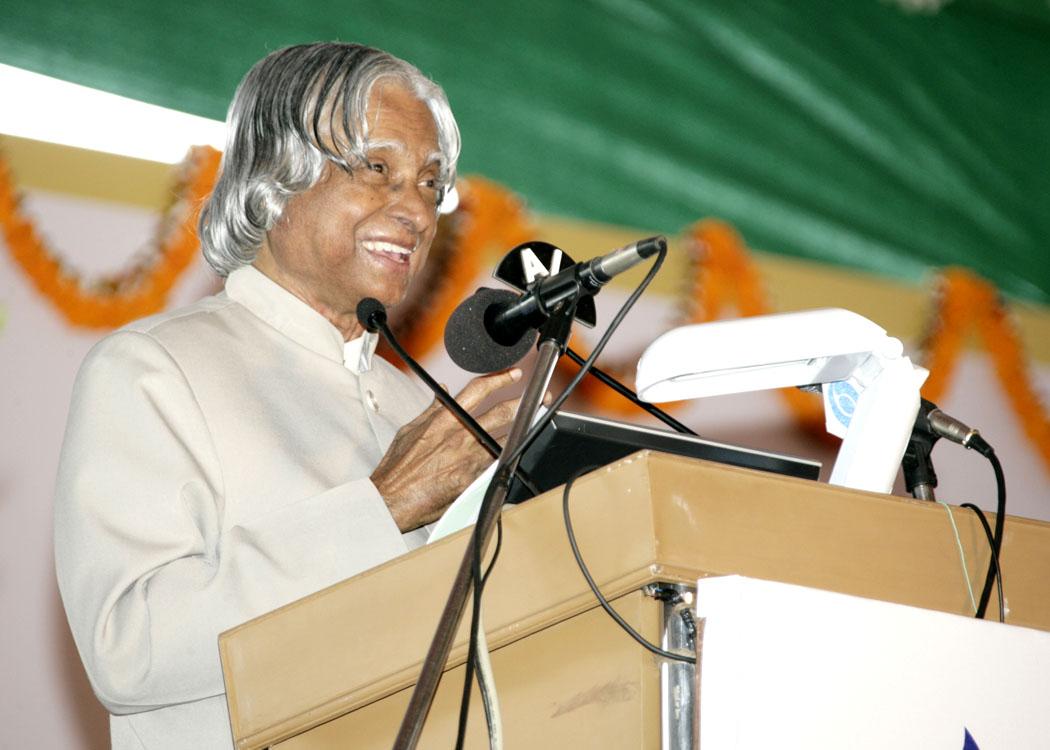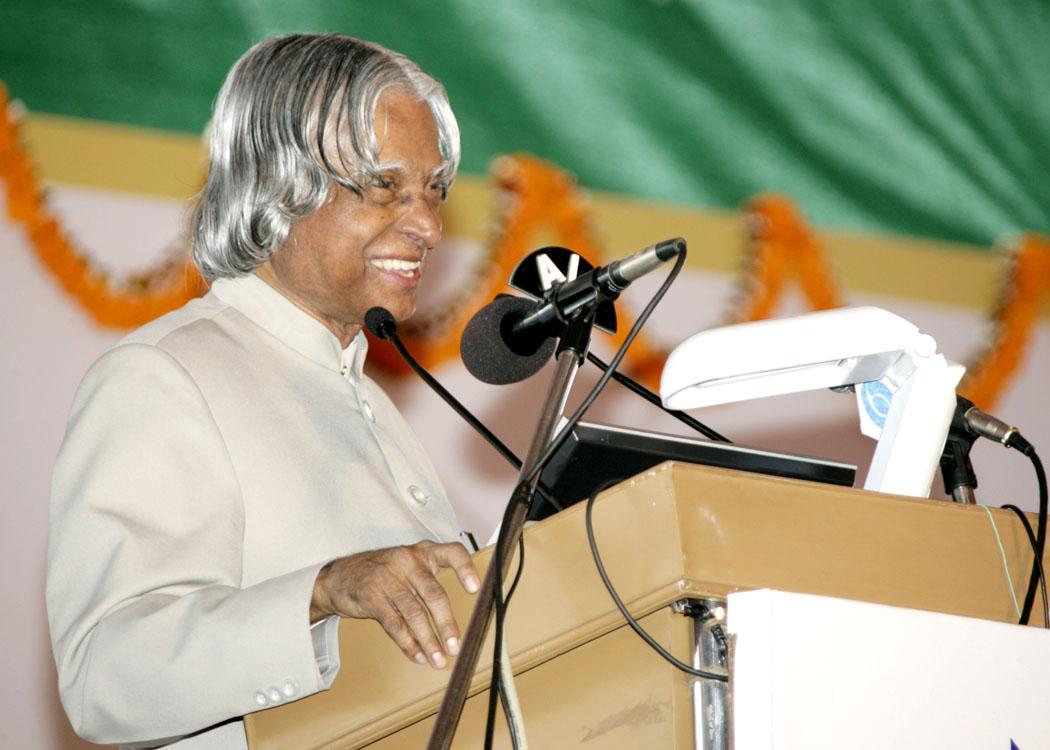Address At The Vikasa Sadassu(Development Forum), Bhimavaram
Bhimavaram, Andhra Pradesh : 06-01-2006
Rural Prosperity and its Multi-dimensions
I am delighted to participate in the Vikasa Sadassu (Development Forum) being organized by the Byrraju Foundation. My greetings to Byrraju Foundation and its members, Vikasa Sadassu fraternity, Ashwini project team, community change agents, trustees, associates, farmers and the participants of the Vikasa Sadassu event in Bhimavaram. I particularly greet Mr. B. Ramalinga Raju, Chairman Satyam Corporation who pioneered not only in Information Technology but also extended his wings to the rural transformation. I am very happy to know that four consecutive Vikasa Sadassu of the Byrraju foundation and its activities have brought a difference in the life style of the people of 150 villages from the five districts of Andhra Pradesh. When I am seeing thousands of persons participating in this Vikasa Sadassu, I am thinking what thoughts I can share here. I have chosen the topic for discussion as "Rural Prosperity and its Multi-dimensions".
Evolution of First Green Revolution
I would like to share with you an event that happened when I was a young boy in Rameswaram during the post independent period. At that time I vividly recall the village community eagerly awaiting for the wheat ship to reach the Madras port so that wheat can reach the village by road. This was the main feeding force for the country in those days. The country used to have hardly a week?s reserve and any delay in the arrival of the ship would cause severe supply problems. This situation was prevalent till the early 60?s. The Green Revolution Programme was launched by the political visionary Shri C. Subramaniam and the scientific visionary Dr. M.S. Swaminathan with the help of the scientists, entrepreneurs and the farmer community. In addition, what was needed was a good water management system, availability of high quality seeds, good storage facility and proper distribution mechanism. The Government through its various development schemes provided these facilities. This has led to intensive agriculture in the country, which produced a substantial amount of food grains and liberated us from the situation of what was called ?ship to mouth existence?. As part of this first green revolution, the country has been able to produce 200 million tonnes of grains per year. But farmers earning capacity is continuously reducing. Hence it is essential to add value to agricultural produce through agro food processing so that farmers? earning capacity can increase. The 2nd Green Revolution includes agro food processing and marketing.
Second Green Revolution
Now is the time for India to embark upon the Second Green Revolution, which will enable it to increase its productivity in the agricultural sector. The production of cereals needs to increase from the present 200 million tonnes to 400 million tonnes by 2020 in view of population growth and increase in the purchasing power. But the requirement of land for the increasing population and urban pressure will bring down the availability of arable land from 170 million hectares to 100 million hectares by 2020. In addition the water availability will be reduced and the people working on the farms will also come down due to attraction of farmers towards the services and industrial sector. All our agricultural scientists and technologists have to provide right type of technologies and work with the farmers for doubling the productivity within the available land and the other constraints. The type of technologies needed would be in the areas of biotechnology, proper training to the farmers, additional modern equipments for preservation and storage etc. The second green revolution is indeed graduating from grain production to food processing and marketing It involves soil characterization, matching the seed to the soil, water and fertilizer management, pesticide management, pre and post harvest management, agricultural waste management, agro processing and marketing encompassing the total value chain. While doing so, utmost care should be taken for various environmental and people related aspects leading to sustainable development. In the 2nd Green Revolution farmers should be encouraged to adopt precision farming techniques which will enable them to produce high quality products consistently and compete in the international market.
Our challenges
Presently, the annual GDP growth rate of the nation is around 7% to 8%. There is a need to increase the growth rate of the GDP by additional 2% a year for transforming India into a developed nation and making the number of people below the poverty line to be near zero, we need to progressively implement the PURA programme in different parts of the country. As you are aware, the number of PURAs required to be brought out in the whole nation is around 7,000. However, I would like to discuss about the enabling environment provided by the Government, and some of the components of PURA and its models available in different parts of the country, which will enable large-scale provision of employment in the rural sector.
Enabling Environment
Bharat Nirman Programme: The Union Government has evolved the Bharat Nirman as a four-year business plan for building infrastructure, especially in rural India. It will have six components, namely, irrigation, roads, water supply, housing, rural electrification and rural telecom connectivity. The broad goals of Bharat Nirman would be:
� bringing an additional 10 million hectare of land under assured irrigation
� providing road-connectivity to all villages having a population of 1000 (or 500 in hilly/tribal areas)
� constructing 60 lakh additional houses for the poor
� providing drinking water to the remaining 74,000 habitations that are uncovered
� reaching electricity to the remaining 1,25,000 villages and electricity connections to 23 million households
� Providing telephone connectivity to the remaining 67,000 villages.
The programme, has been estimated to cost Rs. 174,000 crore and is to be completed in the next four years. The government has allocated an additional Rs. 25,000 crore for social sector programmes during the current financial year. Bharat Nirman will involve Panchayati Raj Institutions in its planning and implementation. The challenging task here is the evolution of the management structure for a mission mode operation through PURA where an integrated development is possible.
Enhancing the rural credit: Bankers have agreed to increase the agriculture and agro processing credit to Rs. 200,000 crore from the existing Rs. 90,000 crore within the next three years in phases. This will include advances for setting up of PURA complexes and small enterprises in PURA clusters.
Biogas plants: Recently two members from TCS Mr. F.C. Kohli and Mr. E.C. Subbarao, gave a presentation on the potential of Bio Gas plants in our rural sector. They had conducted a survey in Andhra Pradesh and Tamil Nadu to determine the current levels of feed stock and energy needs. The survey indicates: adequate feed stock biomass is available for biogas plants and adequate plant biomass is available for gasification plants for electricity generation. Most of these resources are presently being wasted are sub-optimally utilized. Activities like collection of feed materials, operation of plants, maintenance and distribution of biogas and electrical energy and other manual activities will result in local employment, making these villages employment and service hubs. In addition biogas plants will also provide organic manure for farmers.
Preliminary estimates indicates that for a village with a population of thousand people will require a biogas plant of 200 meter cube and an electricity generator of 200 KWs. The capital cost is estimated at Rs. 25 lakhs for biogas and Rs. 44 lakhs for gasifier and electricity generating plants. With this capital cost the cost of biogas works out to Rs.14 per kg compared to the current price of Rs. 20 per kg of LPG and electricity at Rs. 2 per Kwh, which is less than the grid power cost. Each PURA Cluster can have the Biogas plants based on their specific needs. The Vikasa Sadassu can consider introducing Bio-Gas plants into the cluster 116 villages.
Integrated Zero Waste Management: Recently, I came across a total sanitation programme organized at Gandhi Nagar town Panchayat in Vellore district. Here the Panchayat authority in collaboration with non-government organization has been able to segregate the waste into organic and inorganic items. They have created self help groups for men and women for managing the waste in the Panchayat. These groups have established roadside dustbins, which are being cleared regularly. They also have special services for hotels and marriage halls. The drainage system in the village is being cleared thrice in a week. The fault reporting system is so efficient that sanitation faults in the village are attended to and rectified within the same day. A village having two thousand four hundred families generates garbage of over 48 tones per year. This garbage is converted into manure and recyclable waste generating over Rupees three lakhs in revenue. All the two thousand four hundred families in the village are able to have a clean green village just by paying around ten rupees per month per family. The scheme provides employment to around thirty-six members who are paid employees of the Panchayat. Part of the funds required for the payment of these employees is generated by the sale of manure and recyclable waste. This is a self-generating system and is economical. Many of the PURA complexes in the country may like to follow such examples for economic benefits and keeping the rural setting clean, tidy and disease free. In Andhra Pradesh itself, there are two operational power plants in Vijayawada and Hyderabad which generates 6.5 MGW of power from the municipal waste.
Now I would like to discuss about the operational PURAs functioning in Tamil Nadu, Maharashtra and Madhya Pradesh. They are efficiently run by the private, social organizations and institutions. Byrraju foundation may like to study the operational PURAs in the country. These PURAs have focused on employment generation using physical, electronic and knowledge connectivity leading to economic connectivity. This experience I am sure that Vikasa Sadassu may like to consider.
Operational PURAs
Periyar PURA: I had visited Periyar Maniammai College of Technology for Women and inaugurated a PURA Complex a year back. I thought of sharing with you the developmental concept of a cluster of over 60 villages near Vallam, Thanjavur district of Tamil Nadu that involves a population of 3 lakhs. This PURA complex has all the three Connectivities - physical, electronic and knowledge - leading to economic connectivity with employment generation.
Loni PURA: Similarly, I have witnessed in Loni, from Maharashtra where a participative system of integrated rural development has come up among 44 villages with the population of 80 thousand. The Loni PURA has been pioneered by Pravara Medical trust. The thrust area of development has been on comprehensive Medicare particularly for women and children, need based health education, e-connectivity to the farmers and employment generation.
Chitrakoot PURA: Recently I visited Chitrakoot in Madhya Pradesh, where I met Shri. Nanaji Deshmukh (Age 90) and his team members belonging to Deendayal Research Institute (DRI). DRI is a unique institution developing and implementing a village development system, which is most suited for India. As a part of integrated rural development, the villagers are doing water harvesting; effectively use it for cultivation of food grains, medicinal and aromatic and horticulture cultivation. Apart from all these development activities, the institute is facilitating a cohesive conflict free society. This enables the generation of employment for large number of farmers and the villagers, particularly in the area of herbal, medicinal and aromatic plants and agriculture farming, fruit orchards in Chitrakoot region.
Technology Driven PURAs
In all the three operational PURA?s what I have observed is that technology and application of scientific methods are working through technological institutions. For example, power through bio-gas and solar energy is used for house hold lighting and also for the farms; Vermi composting; check dams and water purification plants; Jatropha plantation to extraction and esterification; medicinal and aromatic plants cultivation, extraction and manufacturing healthcare products through self-help groups; low cost housing using alternative building blocks; dairy farming; sugar factory, biogas plants, chemical plants and power projects, healthcare and education services; connectivity using wireless and Wi-MAX technologies and enabling the sustainable development and business processing taking places among the village clusters. These operational PURA system has increased the literacy rate, brought down the infant mortality rate, created employment opportunities for the people, increased the per capita income of the villagers and brought the smiles in the faces of villagers in that PURA cluster. In all these three PURAs, employment generation was the focus using technology experiences from the colleges and educational institutions and through assessment of markets, which can absorb the products and services.
The above-mentioned three PURA are pioneered by the Academic and educational institutions. What I am witnessing today is the one, which is being pioneered by the IT industry assisted Foundation, which is called Byrraju foundation. I call it as Byrraju PURA. What has to be added, is the creation of additional employment potential.
Byrraju PURA
I am very happy to know that Byrraju foundation has undertaken the mission of establishing 32 Ashwini centers benefiting 116 villages with the population of around 500,000 people. It has provided the electronic connectivity through wireless (512 kbps to 2 mbps), knowledge connectivity in cooperation with National Academy of Construction, Hyderabad and other domain experts, thereby creating economic connectivity in these villages.
Economic Connectivity: During the last 4 years of its operation, it has skill enabled and knowledge enabled in areas such as construction, tailoring, Garment production, IT and spoken English skills. This programme resulted in 3000 jobs with the minimum earning of Rs. 3000 per month, this is 3 times that of their earlier earning potential. A rural BPO GramIT, established in Jallikakinada center has trained the unemployed graduates in IT skills and Spoken English and employed 100 people to do the BPO operations such as transaction processing of Human Resource data of Satyam Computers as a back office processing; data processing of one million self-help-group members of Andhra Pradesh such as financial data, accounting data, spending pattern, cultural aspects under the programme of ?Mapping the bottom of the Pyramid?. This GramIT BPO has effected the 10% reverse migration from Hyderabad to Bhimavaram out of 100 people who are employed.
Health Care and Emergency Management: I am happy to see that primary health care services are provided to the remotely located patient using the system designed by the Satyam computer services. Byrraju foundation has brought the emergency medical services to the people of 5 districts such as Hyderabad, Vijayawada, Tirupathi, Visakapatnam and Warangal in association with the EMRI (The Emergency Management and Research Institute). I am happy to know that, when a person dials 108, a toll-free number from any tele-phone, the Advanced Life support system" ambulance reaches the spot and saves the life. I understand the services will be further extended to two more districts, that is East Godavari and West Godavari.
Here I would like to share my experience with the Disaster Management system, which is operational in ICELAND. Iceland has a model Civil Defence Control Centre (CDCC) connecting sea vessels, coast guard and police organisation. Anywhere from the country, the CDCC can be accessed through a single digit number. If it is an earthquake the experts immediately rush to the CDCC and generate the plan of action in few minutes. The identified relief organization reaches the spot instantaneously. I have witnessed the live environment in their Disaster Management Control center and their live operations. The entire ICELAND has been mapped into various zones and is electronically connected and is video and digitally monitored from the central control station. Since Satyam aligned with EMRI has embarked on a mission of providing emergency services in healthcare, you may like to study the model and expand the scope into various disaster Management aspects, which deals with earthquake, volcano, hurricane, fire, accidents and household emergencies. You need to link health with the other disaster management services.
Recently, I have given assent to the Bill "Establishment of National Disaster Management Authority" at centre and state level. It provides the establishment of State and Central level disaster management teams. When Andhra Pradesh government constitutes the State level disaster management agency, institutions like Byrraju Foundation can assist the Government so that the experience gained in emergency responses to healthcare can be shared for managing other types of disasters.
Education: I have also witnessed the tele-education sessions through the video conferencing with the 4 schools. The electronic connectivity between 32 villages has been established by the UNDP funding of Rs. 2 cores to provide wireless connectivity, setting up of studio and computers, video conferencing equipment and camera.
Dear friends, we have developed a tele-education software and I have been using the software for my interaction with the virtual universities, schools and other conferences. This software is called "Virtual Tele-ED". This has a unique feature of providing mutlimedia, that is audio, video and data synchronously with the collaborative tools. A teacher can teach 100's of remote locations connected in a VSAT, broad band and wireless network and create a virtual classrooms. I would be willing to share the software with the Byrraju foundation.
Change Agents: What has attracted me was the process of selection of 2700 change agents from these villages, that is 18 change agents per village. The Gram Vikas Samithi comprising of elders, men and women selects 9 members from each village who will work as a change agents for this programme in the areas of health, education, water, sanitation, livelihood, infrastructure, agriculture, village level productive enterprise in the fields of IT, Garment manufacturing, lathe making, tailoring and construction and artisans. I am sure the Change agents will make a difference to the life of the villagers.
With the emergence of PURA Clusters in different parts of the country including Byrraju PURA, what is now required is to establish the linkage to PURA clusters by setting up of Domain service providers through PURA nodal knowledge data centers.
PURA Nodal Knowledge Data Center
I have studied a system, which is working and used by the farmers and fishermen in different parts of the country. This is called the Kisan Call Centre (KCC) established by the Ministry of Agriculture. Kisan Call Centre offers three levels of interaction and support in Agriculture, fisheries and Animal Husbandry domains through the nationally nominated experts and Corresponding directorates at the Central level. In the last one year of its operation the call centre have provided consultancy, information, assistance and guidance to over 6 lakhs callers from the villages of eight states. Anywhere in India, people can call 1551 as a toll free number to get the servi ces. The top users of the scheme are Maharastra and Tamil Nadu followed by UP and Rajasthan. As we have seen in the Agriculture and fisheries oriented Kisan Call Centre setup, similar Domain Service Provider Call centres are required in the domains of Commerce and Industry, Entrepreneurial skill Development and Employment generation, Travel and Tourism, Banking and Insurance, Meteorological forecasting, Disaster Warning systems, Human Resource Development, Education and Health care and other necessary domains.
These call centers will act as a service provider to the PURA Nodal Knowledge Data Centers located in the PURA Complexes, which in turn will provide the area specific and customized knowledge to the Village Knowledge Centers in the villages in a holistic manner.
Conclusion
I have discussed some of the components of PURA, which are essential for realizing the integrated rural development complexes. I would request the Byrraju foundation to work in partnership with Shri. Vishnu Educational Society and other educational institutions and societal organizations and private industries to undertake the value added implementation of these components in their rural clusters.
My best wishes to all the participants of Vikasa Sadassu for success in their mission of promoting accelerated societal transformation in integrated and sustainable rural development of the Bhimavaram region of Andhra Pradesh.
May God bless you.

